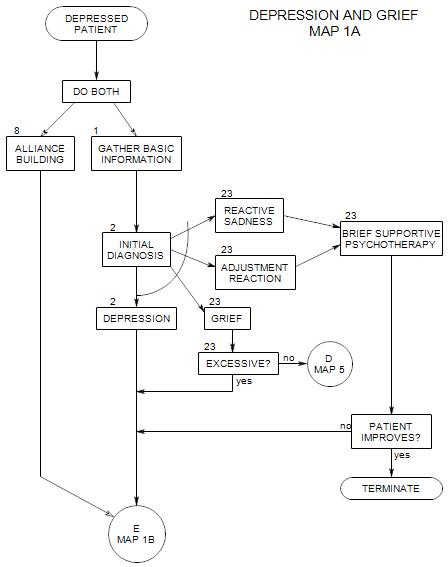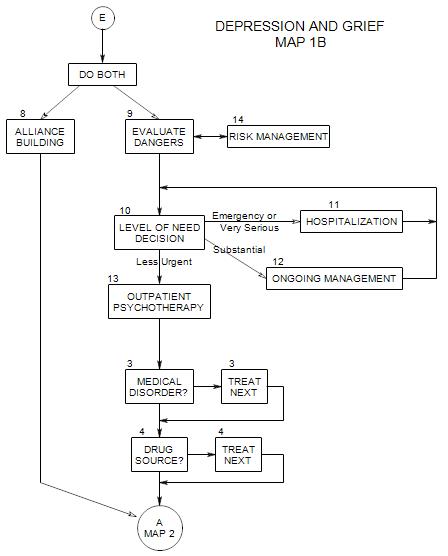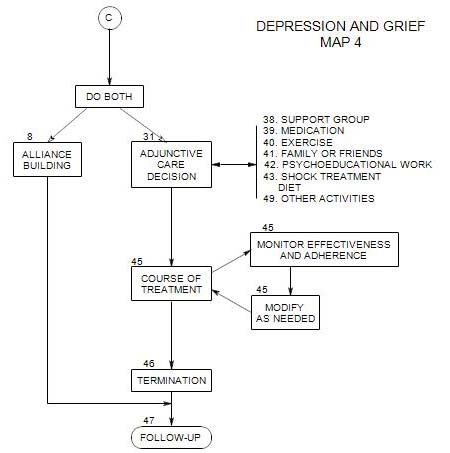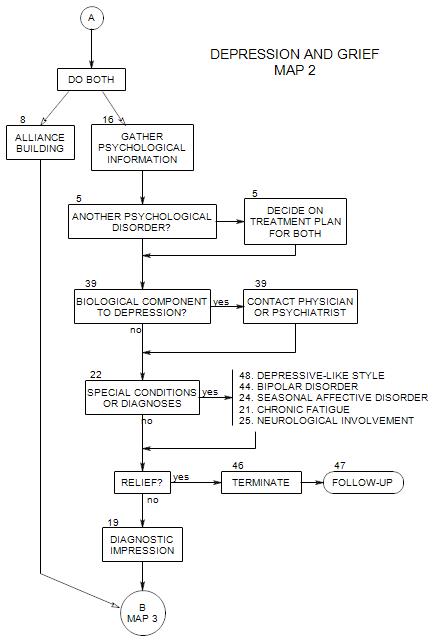
SECTIONS: 5 | 8 | 16 | 19 | 21 | 22 | 24 | 25 | 39 | 44 | 46 | 47 | 48
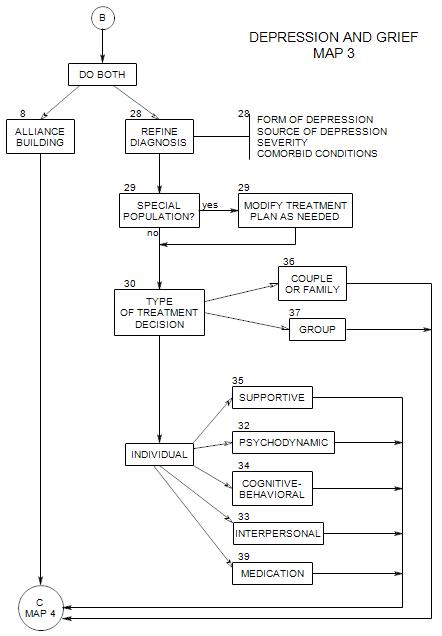
SECTIONS: 8 | 28 | 29 | 30 | 32 | 33 | 34 | 35 | 36 | 37 | 39
-
Follows from Section 31 on Map 4
If the patient needs additional support between sessions, you can plan together the arrangements he/she can make to contact relatives or friends, possibly even making a list together of whom to call and in what order.
If the patient has been brought in by someone else, you should seriously consider involving that other person in the treatment plan. It may be a sign that the patient is unable to care for him/herself, or that the patient’s judgment has been compromised by the depressive process.
The other person may be feeling responsible for the patient in some way. Or fed up with the patient’s helplessness and bad mood. In any case, the motives of that person must be taken into account.
The other person may have to provide support, possibly even management of the patient’s life. The patient may be resistant not only to treatment but even to the awareness of his/her own depression and its effect on others.
